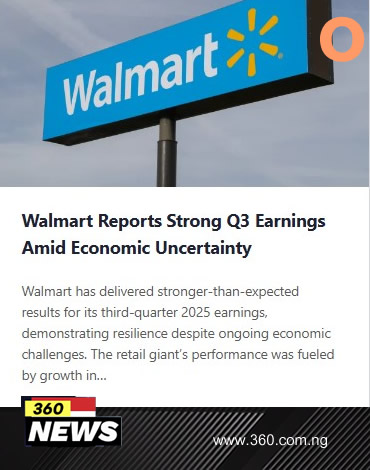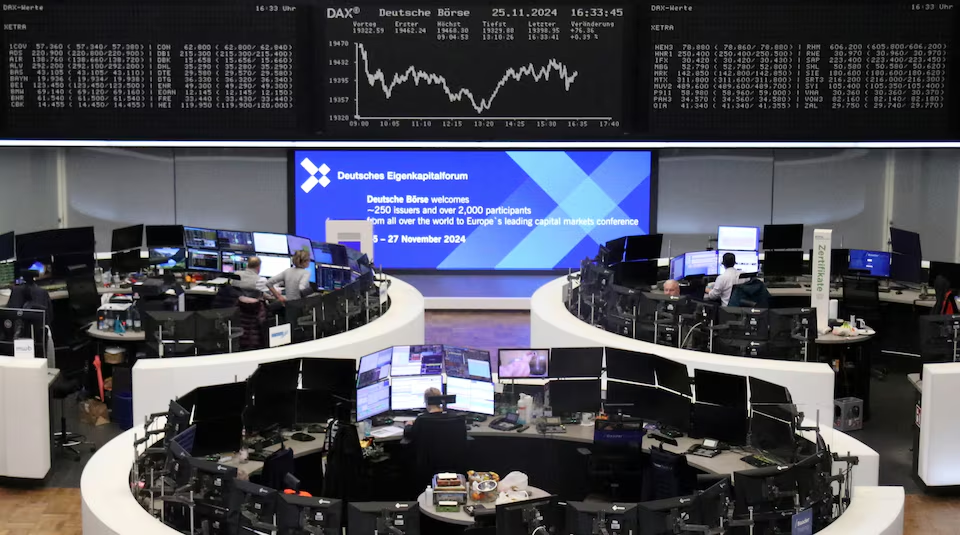Walmart Reports Strong Q3 Earnings Amid Economic Uncertainty

Walmart has delivered stronger-than-expected results for its third-quarter 2025 earnings, demonstrating resilience despite ongoing economic challenges. The retail giant’s performance was fueled by growth in both its e-commerce and in-store sales, as well as its ability to manage rising costs and supply chain pressures.
The company’s solid results highlight the strength of its business model, particularly its focus on value-oriented products and services, which continue to attract budget-conscious consumers.
For the third quarter of fiscal year 2025, Walmart reported revenue that surpassed Wall Street’s estimates, driven by robust demand for groceries, household essentials, and other everyday items.
The company’s total revenue rose by 5%, reaching $170.4 billion, compared to $162.8 billion in the same period the previous year. This growth was largely attributed to increased consumer spending in core categories, despite inflationary pressures that have weighed on many households.
Walmart’s net income also saw a significant increase, up 7% from the previous year, reaching $6.1 billion. This was largely driven by strong sales in its U.S. operations, which continue to be the backbone of the company’s performance.
The company’s core grocery business, which makes up a large portion of its overall sales, has seen sustained demand as inflation has pushed consumers to seek more affordable options for food and essentials. Walmart’s ability to provide value-oriented pricing has proven to be a key advantage in a challenging economic environment.
In addition to its strong sales in physical stores, Walmart’s e-commerce operations also contributed positively to the quarterly results. Online sales grew by 10%, as more consumers continued to shop from the comfort of their homes, taking advantage of Walmart’s convenient delivery and pickup options.
The company has made significant investments in its digital infrastructure in recent years, including expanding its online grocery services and improving its website and mobile app. These investments appear to be paying off, as more shoppers turn to Walmart for their online and in-store shopping needs.
Walmart’s strong performance comes amid a backdrop of economic uncertainty, including rising interest rates, inflationary pressures, and supply chain disruptions.
Despite these challenges, Walmart has managed to maintain its competitive edge, benefiting from its extensive network of physical stores and its ability to adapt quickly to changing consumer behavior.
The company’s supply chain improvements have also helped it mitigate the impact of global shipping delays, ensuring that its shelves remain stocked with essential products.
The company’s efforts to enhance its supply chain have been a major focus in recent years, and Walmart’s ability to deliver products to consumers quickly and efficiently has become a significant competitive advantage. This is particularly important as more consumers demand faster delivery times and more convenient shopping experiences.
Walmart’s widespread network of stores and warehouses, along with its investments in automation and technology, have allowed the company to meet these demands and strengthen its position in the competitive retail market.
Another area where Walmart has excelled is in its focus on sustainability and social responsibility. The company has committed to ambitious environmental goals, including achieving zero emissions by 2040 and sourcing more sustainable products.
Walmart has also continued to invest in its workforce, offering better pay and benefits to employees, which has helped improve morale and retention rates.
These efforts are part of Walmart’s broader strategy to appeal to socially conscious consumers and strengthen its brand image.
Looking ahead, Walmart is optimistic about its continued growth in the fourth quarter, despite the potential for ongoing economic challenges. The company has raised its full-year earnings forecast, reflecting confidence in its ability to navigate the complexities of the retail landscape.
Walmart’s leadership team has expressed a commitment to maintaining strong cost controls, enhancing the customer experience, and driving innovation in its operations, all of which will help the company sustain its momentum in the coming months.
While Walmart’s performance has been impressive, the company faces competition from other large retailers, particularly in the grocery and e-commerce spaces.
Companies like Amazon, Target, and Costco continue to invest heavily in their own digital and physical operations, putting pressure on Walmart to stay ahead in terms of pricing, convenience, and service offerings.
However, Walmart’s deep brand loyalty, extensive store network, and vast product assortment provide it with significant leverage in the competitive retail sector.
Overall, Walmart’s third-quarter earnings report highlights the company’s ability to thrive in a challenging economic environment.
With its strong performance in both brick-and-mortar and online sales, combined with a focus on cost management and consumer value, Walmart is well-positioned to continue delivering solid results through the remainder of the fiscal year.
As consumers remain cautious in their spending amid economic uncertainty, Walmart’s reputation as a value-oriented retailer is likely to remain a key factor in its ongoing success.
Picture News







